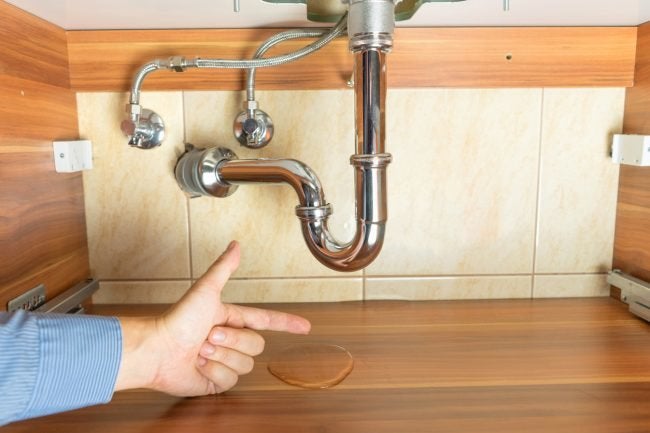This article down below about Top leak detection hacks is totally remarkable. Don't overlook it.

Early discovery of dripping water lines can mitigate a potential catastrophe. Some small water leaks may not be visible.
1. Check Out the Water Meter
Every house has a water meter. Checking it is a surefire way that helps you find leaks. For starters, shut off all the water resources. Make certain no one will purge, utilize the tap, shower, run the cleaning machine or dishwashing machine. From there, most likely to the meter and also watch if it will certainly transform. Considering that no person is utilizing it, there should be no movements. If it moves, that shows a fast-moving leakage. If you discover no adjustments, wait an hour or 2 as well as check back again. This means you may have a slow leak that can also be underground.
2. Inspect Water Intake
If you find unexpected modifications, despite your intake being the exact same, it means that you have leakages in your plumbing system. An unexpected spike in your expense suggests a fast-moving leak.
A constant rise every month, also with the exact same behaviors, reveals you have a sluggish leakage that's likewise slowly rising. Call a plumber to completely check your residential or commercial property, specifically if you feel a warm location on your flooring with piping below.
3. Do a Food Coloring Test
When it comes to water intake, 30% comes from commodes. Test to see if they are running appropriately. Drop specks of food shade in the container as well as wait 10 mins. There's a leak between the container and bowl if the shade somehow infiltrates your bowl throughout that time without flushing.
4. Asses Outside Lines
Don't fail to remember to examine your exterior water lines also. Needs to water permeate out of the connection, you have a loose rubber gasket. One tiny leakage can throw away bunches of water as well as increase your water bill.
5. Evaluate as well as Evaluate the Circumstance
Property owners must make it a behavior to examine under the sink counters and also inside cupboards for any type of bad odor or mold and mildew growth. These two red flags show a leak so prompt interest is needed. Doing regular examinations, even bi-annually, can save you from a significant problem.
Examine for discolorations and also compromising as most pipelines and devices have a life expectations. If you think dripping water lines in your plumbing system, don't wait for it to intensify.
Early detection of leaking water lines can minimize a prospective calamity. Some tiny water leakages may not be noticeable. Checking it is a guaranteed means that helps you uncover leaks. One small leakage can squander bunches of water and surge your water bill.
If you think dripping water lines in your plumbing system, do not wait for it to intensify.
How to Know If Your Home Has a Hidden Leak
Water Meter Reveals Inexplicable Water Usage
If you’d like to test whether or not there’s a leak somewhere in your home, you can do this using your water meter. Here is how to conduct the test:
Don’t use any water in your home for at least 30 minutes; this also means not turning on faucets or water-using appliances.
Go outside, and check your water meter for activity.
If your water meter shows that there was activity, even though no one was using any water, this proves that there is a leak in your home.Visible Mold or Mildew Growth
Leaks behind walls create moist, dark environments that allow mold and mildew to grow and thrive. Eventually, you might see mold growth forming on the wall closest to a hidden leak.
If mold is growing in an area that receives a high amount of moisture, such as a bathroom, it may simply be an indication that better ventilation is needed. However, if you see mold growth on a wall or the ceiling in an area where you would not expect, you probably have a hidden leak.
Musty, Mildew Odor
Sometimes you might not be able to see the mold or mildew that is growing as a result of a leak. However, the smell can give the problem away just as easily. If you catch a whiff of something musty, there’s a good chance that old water is collecting somewhere in your home that you can’t see.
Stained/Warped Walls, Ceilings, or Floors
When your home soaks up water, a variety of red flags can become visible, including ceiling stains, bubbling drywall, warped walls, and sagging floors. While these issues can be caused by excess humidity, they can also be signs that a pipe or plumbing connection has started leaking behind your walls.
Inexplicably High Water Bill
After a while, you get a general sense for what your water bill should be. If you own a pool or sprinkler system, your bill will tend to be higher during summer. However, if you receive a water bill that seems especially high, and you can’t figure out what caused it, then you may have a hidden leak somewhere that’s increasing your bill.
https://www.plumbingjoint.com/blog/2019/july/how-to-know-if-your-home-has-a-hidden-leak/

I'm very curious about Leaking water lines and I really hope you enjoyed the entire blog entry. Liked our blog posting? Please share it. Let someone else check it out. Bless you for your time. Don't forget to come by our blog back soon.
Burst? Reach us!